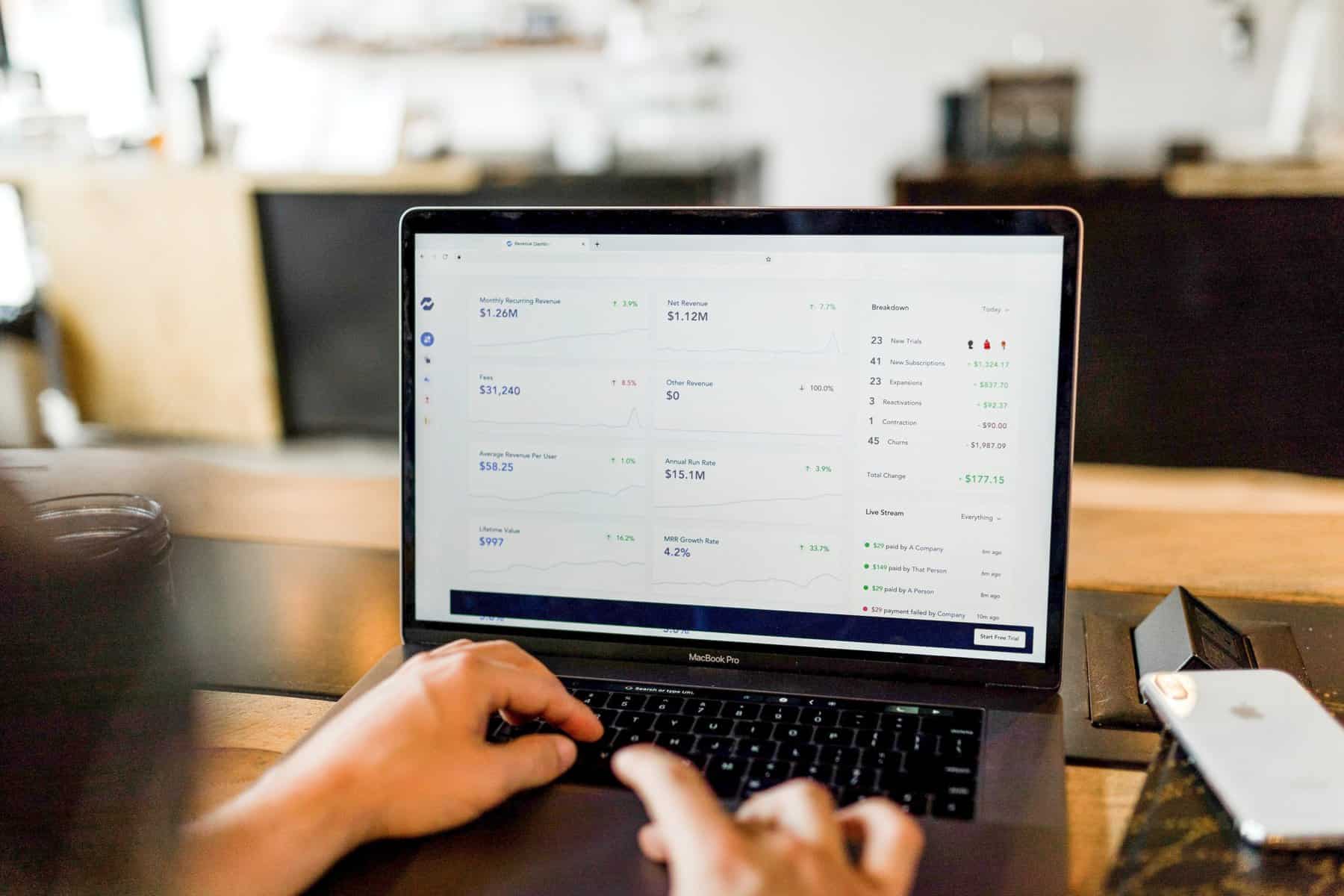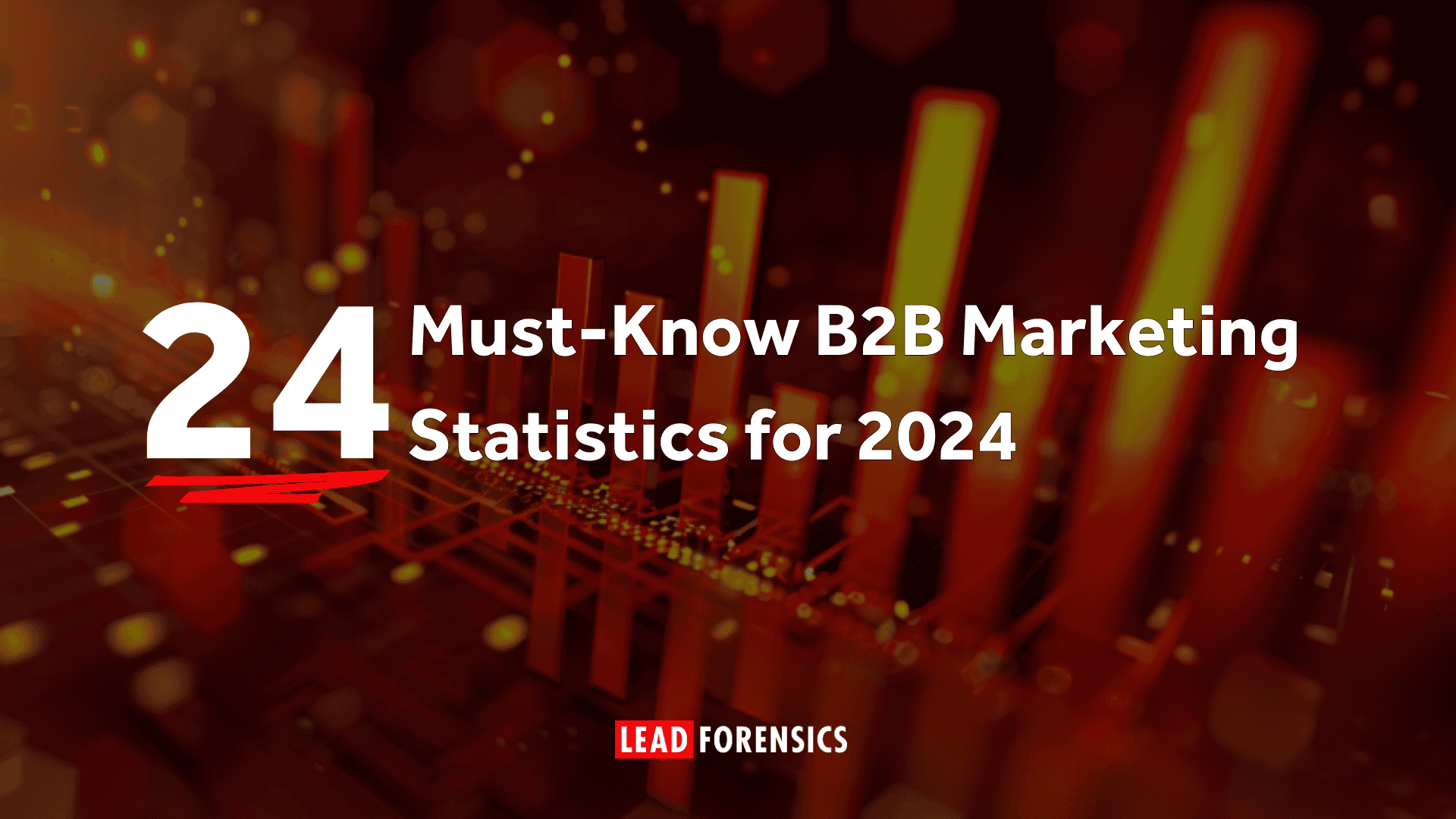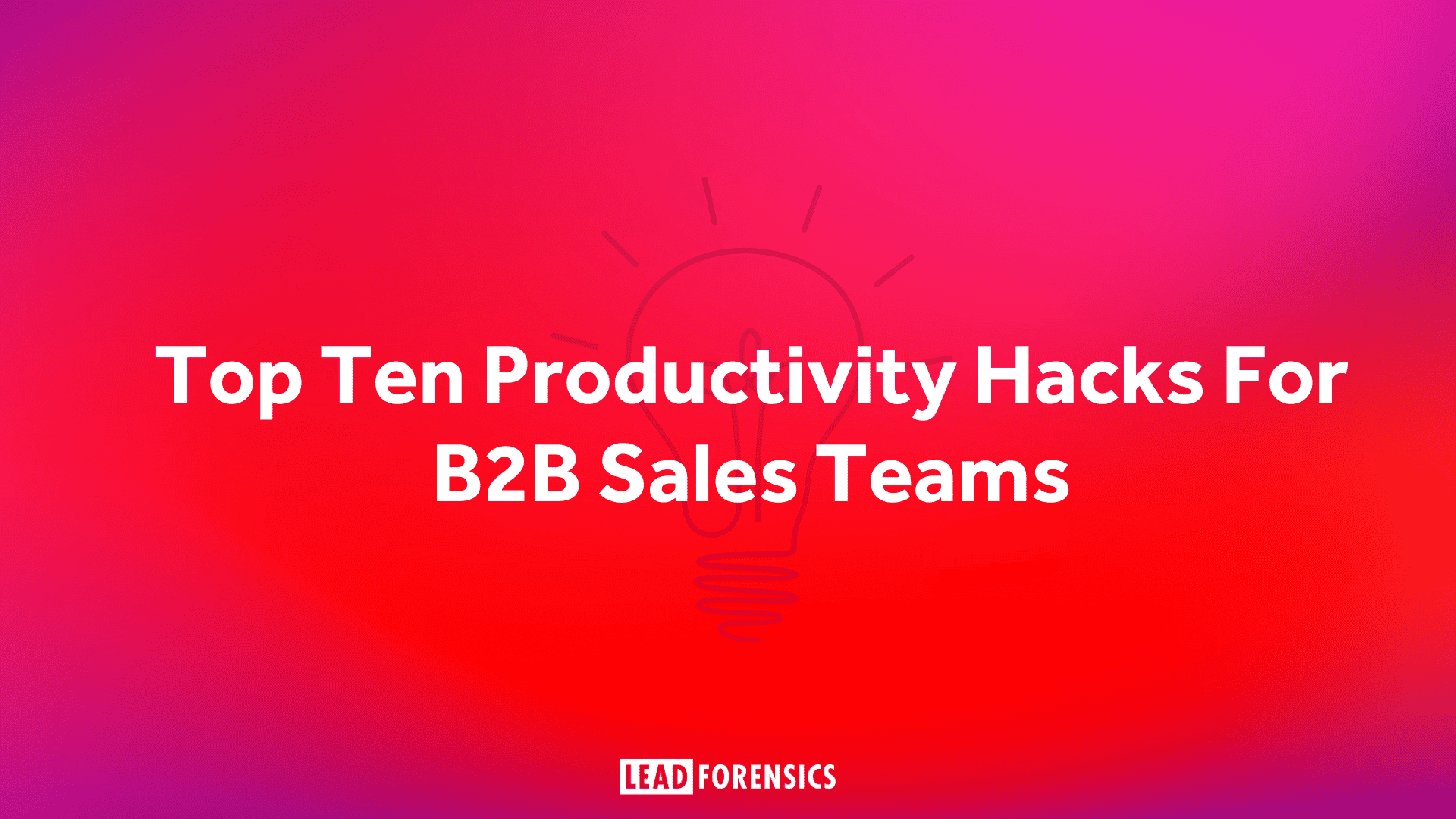Considering an influx of metric data can miscommunicate information, rendering it irrelevant to your primary business goals.
To help you achieve the ultimate B2B sales success, we’ve pulled together the definitive list of the most helpful B2B sales pipeline metrics. Here are the fundamental figures you need to know to understand current team performance and implement improvements to revolutionize results.

New opportunities gained
This B2B sales pipeline metric is the defining measure of what fuels your sales pipeline. Understanding how many new leads and prospects enter your pipeline is key- whether they come from your outbound sales activity, or from another department such as marketing.

You need this metric to understand your success throughout your entire pipeline and calculate many other vital B2B sales pipeline metrics.
This number also offers insight into your market dominance, your brand reach and the demand for your product. Ensure you have the ability to understand the precise number of pipeline opportunities gained from all channels.
Generally speaking, a higher number of qualified leads should translate into hot sales opportunities.
There’s no one-size-fits-all formula for calculating new opportunities. This varies from person to person and company to company.
For example, you may move a prospect from lead to opportunity once they book a demo. Conversely, another company may not consider a prospect an opportunity until they request a formal proposal.
Leads qualified
This figure outlines the success of your first pipeline stage- how many of the new opportunities gained turn into qualified leads? This B2B sales pipeline metric offers insight into the quality of your outreach efforts.
More opportunities confirmed as appropriate for your product proves a focused and lucrative lead generation/prospecting approach. This metric can also help you understand how effective and rigorous your qualification processes are.
If you aren’t attracting prospects with a high probability of becoming customers, the resulting low ratio of leads to qualified leads alerts you to potential flaws in targeting campaign effectiveness.

In practice, this B2B sales pipeline metric is also good for determining which salesperson (or team) has the best understanding of the customer persona. You can then promote their approach as a best practice for your sales team.
If you qualify a large number of leads but fail to achieve a high rate of wins- you need to ask whether your current processes are strict enough to align with essential product criteria or contract terms.
Win rate
This is a powerful B2B sales pipeline metric, outlining the number or percentage of wins achieved based on the opportunities gained. For example, if you gain 50 new business opportunities, and achieve 20 sales from them, you have a 2 in 5 win rate (or 40%).

Win rates give sales teams more visibility into the practices that are working and the ones that aren’t. The metric provides insights into which strategies, sales reps and time periods are more likely to turn a prospect into a customer.
This measurement helps you reflect on pipeline success, especially for individual team members. Those achieving a 1 in 5 win rate will have some advice for those only closing 1 in 10. This is a great B2B sales pipeline metric to use as a motivational KPI for sales teams, helping them work to deliver a reliably strong sales performance.
Sales win rates can also indicate whether businesses are going after the right buyers in a given market. For example, if a company’s win rate is low, it can mean one of two things.
Either their sales team is underperforming and needs a course correction or they’re targeting prospects that aren’t a good fit for the product or service. Now the company has an idea of what the issue might be and can investigate further before making the necessary adjustments.
Additionally, the win rate helps you quickly understand the number of opportunities needed to meet the required business targets. If you’re tasked with securing 15 new customers each month, your win rate helps you work backward to understand how many opportunities need to be generated.
Conversions
Understanding the conversions between each stage of your pipeline is key. Know how many stages your pipeline works through and measure the percentage of leads moving from one to the next. It’s common to achieve a lower conversion rate at the start of your pipeline.

Opportunities gained to leads qualified commonly achieves around 50-60% conversion. However, in the latter stages, a much higher conversion rate of around 80-90% is expected, as leads have been qualified and nurtured to follow through with an investment.
Consistently monitor your pipeline conversion rates on both a team and individual level to quickly pinpoint specific pipeline stages failing to deliver the desired result. From here, you can immediately implement changes to prevent future losses and increase success.
Revenue/deal size
Revenue is a known essential B2B sales pipeline metric, feeding directly into business targets for growth. But it’s important to look beyond the large revenue number and consider the deal size.
How much revenue is each deal bringing in? What are the differences between the pipeline processes of high-value deals and low-value deals? What kind of timescale, investment, and effort are required to secure bigger deals?
Just looking at a single metric depicting overall revenue benefits your business insight but doesn’t help improve your sales pipeline. Use an understanding of deal size to critically assess your revenue gain and drive future strategies that boost pipeline efficiency and success.
Customer Churn
While customer lifetime value measures the amount of projected revenue generated from the average customer, customer churn tracks customer attrition. This B2B sales pipeline metric is useful for businesses that use a subscription model, such as SaaS products, telco products, or paid newsletters.
The formula for customer churn is straightforward. Just subtract the customers you have at the end of the month from the number of customers at the start of the month, then divide the difference by your starting number.

Average churn rates vary across industries and company ages. For example, the average churn rate for SaaS is around 5%, while established companies that are at least 10 years old have a maximum average churn of 4%.
Interestingly, older companies tend to have lower churn rates. As brands mature, the companies behind them tend to better understand customer needs and know how to position their products to meet those requirements. Also, companies that don’t solve high churn rates tend to have shorter life spans.
Average order value
This B2B sales pipeline metric acts like a hybrid between deal size and win rate, helping your team understand the average value each deal is worth.
This metric is additionally insightful when setting revenue targets, depicting roughly how many deals need to be secured to ensure the required revenue is gained. AOV is also a great way to measure the improvement of lead quality and sales processes over time.
Seeing how your AOV fluxes month on month or quarter to quarter offers insight into the success of your long-term strategy. This metric helps you identify where your team experienced slumps and question what strategic elements were lacking or under-delivering.
Average Order Value is a useful metric for identifying:
- How much money customers are willing to spend on your products or services
- The ideal target customer
- If your products or services are priced correctly
This B2B sales pipeline metric also comes in handy when it comes to sales projections. Let’s say your business is working to achieve a given sales figure by the end of the year. Your average deal size serves as a guide to determining the number of sales required to reach that goal.

For example, if a company’s average deal size is $25,000 and the target is $500,000 in annual sales, at least 25 sales require conversion to reach the intended figure.
Sales cycle length
A defining feature in B2B sales is the length of purchase. Where the consumer can decide to buy something instantly and impulsively, a B2B sale very rarely takes this path. Some high-value B2B sales can last over 12 months! This B2B sales pipeline metric is key because a healthy sales pipeline is a short sales pipeline.
An overview of your sales cycle length and variables reveals personnel and resource gaps in your sales process. It can also provide insights into why some products have a higher conversion rate than others.
It’s important to note that B2B sales deals can take anywhere from 1–12 months to complete, depending on the industry and the product being sold. Higher-value products typically have longer sales cycles than consumables.
For example, in a professional services industry like SEO and link building, the sales pipeline for working with a big firm can be 1–3 months. Whereas industrial equipment sales can often take 6–12 months to close.
To calculate your average sales cycle length:
- Gather closed sale data and compute the amount of time that elapsed between the first contact to each of the deals being completed
- Compare your results to competing brands and products in the same market

We’re not saying you should aim to secure a sale on the first call. However, dragging leads through a vast amount of unnecessary pipeline stages can hinder success, as potential buyers become bored or distracted.
Measure your sales cycle length to understand pipeline efficiency, considering the stages used to ensure your processes are optimized for the ultimate sales results.
Customer Lifetime Value
Studies show that attracting new customers is more costly than retaining existing ones. If you believe in establishing long-term relationships with your customers, then customer lifetime value (CLV) is one of the B2B sales pipeline metrics you should track.

Customer lifetime value is a business metric that measures how much a business can plan to earn from the average customer over the course of the relationship.
Differences in products, costs, purchase frequencies, and purchase volumes can make customer lifetime value calculations complex. However, with the right tools, you can find customer lifetime value in just a few clicks.
With an understanding of CLV, you can make better-informed marketing and sales decisions, among other benefits.
To measure your CLV:
- Determine your average order value – start by finding the value of the average sale. If you have not been tracking this data for long, consider looking at a one- or three-month period as a proxy for the full year.
- Calculate the average number of transactions per period – do customers come in several times a week, which might be common with a coffee shop, or only once every few years, which could be the case at a car dealership? The frequency of visits is a major driver of CLV.
- Measure your customer retention – finally, you’ll need to figure out how long the average customer sticks with your brand. Some brands, like technology and car brands, inspire lifelong loyalty. Others, like gas stations or retail chains, may have much less loyal customers.
- Calculate customer lifetime value – now you have the inputs. It’s time to multiply the three numbers together to calculate CLV per the formula below.
The main value of this B2B sales pipeline metric is its ability to help you determine the types of customers that are likely to generate the most revenue for your business. It also provides insights for maintaining customer relationships and providing long-term value.
Sales velocity
Sales velocity (sometimes called funnel velocity) is a B2B sales pipeline metric that measures how quickly your business is generating new revenue. By tracking the different factors that affect the rate at which new revenue is earned, businesses are able to make improvements to specific areas.

Taking into account a variety of B2B sales pipeline metrics mentioned above, sales velocity tells you how much revenue is generated by your team on a daily basis.
As we’ve mentioned, B2B sales can sometimes take a long time to come to fruition, so sales velocity helps you and your team understand the worth of their daily efforts.
A high sales velocity B2B sales pipeline metric means you’re securing a large amount of revenue, in a short amount of time – which is a winning combination! Your pipeline isn’t dependent upon sales velocity, but we would recommend checking this figure periodically- once a month for example.
This ensures your team is maximizing their time and pipeline to ensure a strong result.
To accurately calculate an organization’s sales velocity, start by separating small, mid-market and enterprise pipelines.
Your company likely has its own nuanced definition of what constitutes each of these segments and you should divide them accordingly.
Once you’ve divided your market segments, run a sales velocity equation for each one.
Sales Velocity = Number of Opportunities x Deal Value x Win Rate / Length of Sales Cycle
Return on investment
Sales velocity additionally helps you determine ROI. B2B sales can become costly, especially as modern teams use an average of five different sales software solutions such as a CRM, automation software, or a pipeline manager.
Return on investment is a B2B sales pipeline metric that helps you understand how much revenue return is gained (or lost) from your budget expenditure.

If you invest in a new pipeline management tool, you’ll want to ensure it brings your business benefit– otherwise, your team will have to work harder to simply regain the budget lost.
ROI isn’t just important to securing the optimum pipeline- it’s important to every business department! Without securing ROI, your business will struggle to generate enough revenue to promote growth.
Retention
It’s easy to think that once your pipeline has done its work in transforming an opportunity into a client, its duty is over. Whilst this is true in a practical sense, it’s important to remember that the pipeline process taken to influence a sale continues to have influence over retention.
A well-executed sales strategy produces highly loyal clients with increased lifetime value. These clients continue to spend money on your products and offer your business a reliable revenue stream.
However, a weak sales pipeline produces disengaged clients, who will move on to purchase from your competitors in the future. Generate an understanding of your retention success to help drive a more successful sales pipeline that doesn’t just produce new customers but manages to keep them too.
With these B2B sales pipeline metrics, you’ll gain an invaluable understanding to drive impactful improvements that enable sales success. If you’re keen to achieve improved sales results, why not discover Lead Forensics? Our revolutionary software solution identifies the businesses visiting your website to promote your most valuable source of high-quality, new business opportunities.
With email addresses and telephone numbers for key decision-makers provided in real-time alongside a detailed breakdown of each visit, your team can take conversion control. Find out more and book your free demo today!
Thank you
Thank you for reading our latest best practice guide on our B2B Sales Blog – “B2B Sales Pipeline Metrics: the definitive list” We publish fresh content every week, so please subscribe for alerts, or come back again for more.
In the meantime, you may be interested to read “Sales qualified leads (SQLs) – what they are and how to get more of them”
And, if you’re interested in knowing who is visiting your B2B website, you can request a demonstration of Lead Forensics here.








